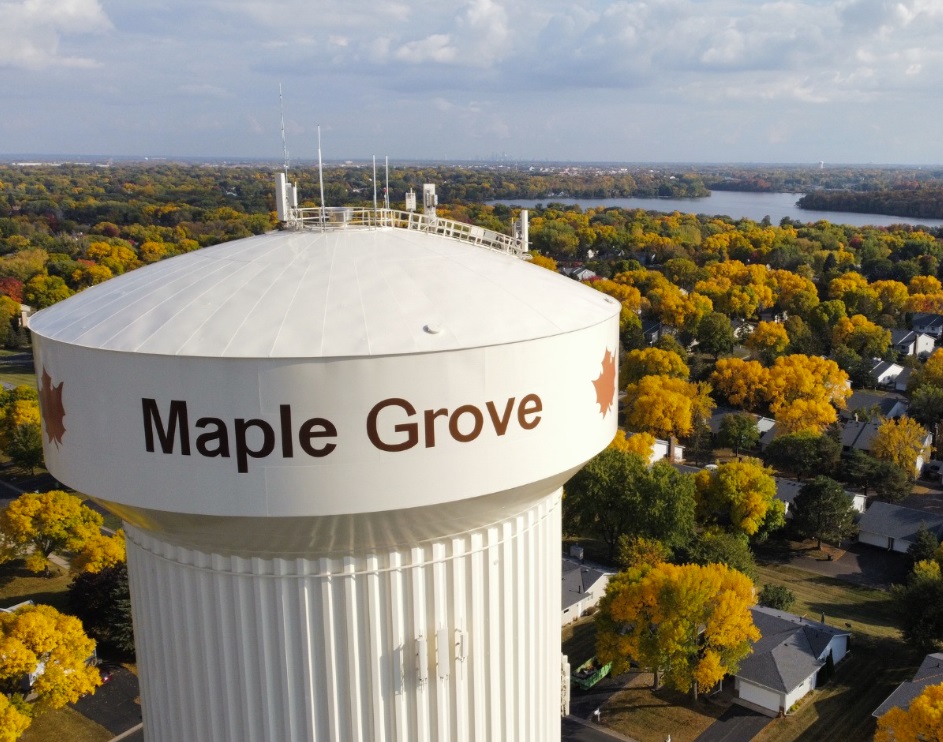The Hermitage: The Fanciful, Tragic Story of the Lake Minnetonka Hermit Brothers
The brothers Halsted forged two very different legends on the lake's western shore.
1:55 PM CST on December 12, 2022
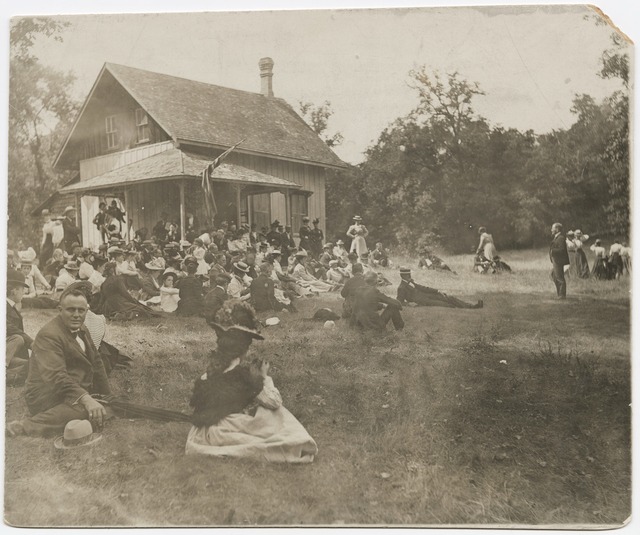
The Hermitage.
In the late 1800s, Lake Minnetonka and the small towns that dotted its shores were considered among the finest resort areas in all of the United States. Lake Minnetonka’s picturesque views, countless coves, proximity to Minneapolis and St. Paul, and romantic yet mysterious history annually attracted tens of thousands of visitors. The eastern shore of the lake was a 15-mile journey from Minneapolis by rail, and three railroads ran several trains daily to the lake to depots in Wayzata, Mound, and Excelsior.
The lake area’s Euro-American history dates back to 1852. Simon Stevens is noted as the first Euro-American settler in the area when he staked a land claim at the outlet of Lake Minnetonka near the future site of Minnetonka Mills. That same year, Wayzata was established as a lakeshore village. The next year, the townsite of Excelsior was settled by a small colony of settlers from New York. Even as these regions of the lake began to develop, the western portion of Lake Minnetonka remained remote except for one standalone cottage: The Hermitage.
In 1855, Frank W. Halsted selected a remote location in the westernmost reaches of Lake Minnetonka to build a small log cabin. Halsted’s land offered sweeping views of Crane Island and Enchanted Island from a small bluff some 50 yards above the shore. In the early 1860s, Halsted left his log cabin behind to join the Union’s ranks in the Civil War. Frank returned to his cabin in 1866 as a distinguished army veteran. Using the modest money he earned during the war, he added a large addition to the original log structure with a new front porch, kitchen, living room, bedroom, and an upstairs quarters.
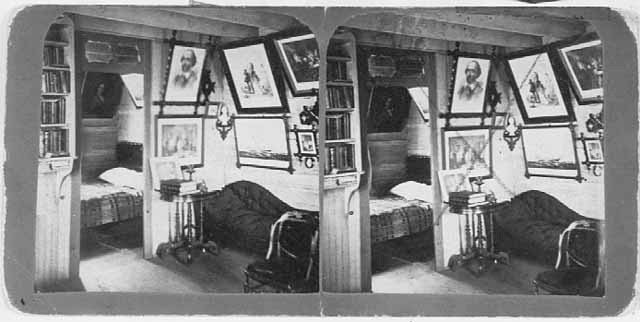
After the Civil War, large resorts began to spring up along the eastern portion of the lake. As more summer visitors flocked to the lake, Frank chose a life of solitude and kept to himself. Thus, folklore and gossip began to tell the tale of “the hermit of Lake Minnetonka.” Some tales suggested that Frank took a vow of silence after the horrors of the war. Other stories surmised that he chose to live his life in solace after a love interest declined his marriage proposal. Regardless of the folklore, Frank frequently ran errands to Zumbra Heights and Excelsior and was known by the shopkeepers in both towns. Frank likely just preferred his quaint, peaceful existence.
In his later years, Frank Halsted began to invest his time and money into the burgeoning steamboat industry on Lake Minnetonka. He purchased the materials needed to build his own steamboat, which he named Mary, after his mother. Despite Frank’s best efforts, he never finished building the watercraft due to financial issues. Finding himself in financial trouble and seeing no way out of the dilemma, he walked down to the water just outside of The Hermitage in June of 1876, tied a weight-filled sack around his neck, and plunged into the lake. His body was found floating near Crane Island by a group of fishermen a few days later.
Just after Frank Halsted’s death, the community chose to honor the early settler by naming Lake Minnetonka’s westernmost bay after the late Frank Halsted. Thus, Halsted Bay lives on in remembrance of the original hermit of Lake Minnetonka.
Major Halsted Becomes the New Hermit
When he heard the news of his younger brother’s passing, Major George Blight Halsted traveled to The Hermitage on Lake Minnetonka to bury his remains. Major Halsted laid his brother to rest underneath a large oak tree in the shadow of The Hermitage, marking the spot with a small fence and a cairn.
George was an Ivy Leaguer, having graduated from Princeton University in 1844. After his graduation he worked as a lawyer for the state of New Jersey from 1845 through 1852 while the Halsteds’ father served as Chancellor of New Jersey. George continued to practice law until he joined the Union’s Grand Army of the Republic during the Civil War. Major Halsted served in the Battle of Appomattox where he witnessed General Robert E. Lee surrender to General Ulysses S. Grant. After the war, he lived in Newark until he learned about death of his younger brother.
After burying Frank and resolving his younger brother’s debts, George fell in love with The Hermitage and its beautiful surroundings. He chose to adopt The Hermitage and assumed the title of “The Hermit of Lake Minnetonka” for himself.
Although brothers, Frank and George could not have been more different. George was a bright and hospitable occupant of The Hermitage. While he fully leaned into his new title as Lake Minnetonka’s hermit, most referred to him as Major Halsted. This new hermit boasted to all that The Hermitage’s door was never locked, and every visitor was welcome at all hours.
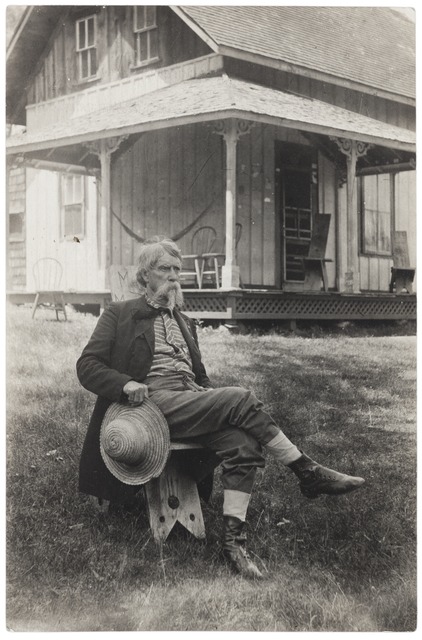
During the years that Major Halsted called The Hermitage his home, Lake Minnetonka was in its resort heyday, and one of the most sought-after attractions on the lake was paying a visit to the gallant new occupant at The Hermitage. The tragic circumstances surrounding Major Halsted’s brother’s death helped to shroud The Hermitage with some sort of dark romanticism. The cottage became a local legend, with thousands of adventure seekers conversations with the friendly hermit.
Visitors to The Hermitage were greeted by a small, unpretentious but welcoming home with dramatic views of the upper lake, about one mile north from Zumbra Heights. Inside, visitors could find the gracious and polite Major Halsted, always ready to welcome new guests. Major Halsted operated The Hermitage as a living museum, home to several priceless relics and souvenirs. The most famed artifacts were a collection of two wooden chairs: one belonging to the former president of the Confederacy, Jefferson Davis, the other belonging to the first president of the United States, George Washington. Many who made the pilgrimage to The Hermitage donated knick-knacks and bric-a-brac in exchange for permission to carve their names into any and all surfaces of the home. It is said that, once all the walls and the ceilings of The Hermitage were completely carved up with signatures, visitors began to adorn the windows and doors with their autographed strips of cloth and paper so they, too, could claim a piece of the property.
As unfailingly obliging as Major Halsted was, he held a grudge toward one company and its employees. Major Halsted had completed building his younger brother’s steamboat, Mary, which he would often take for joy rides up and down the lake with several guests at a time. One summer, while he was carefully navigating his craft through the Narrows—a confined canal that connected the upper and lower Lake Minnetonka—a much larger passenger steamboat, The Belle of Minnetonka, entered from the opposite side. The captain of the Belle paid no mind to Major Halsted as the Belle’s wake nearly capsized the much smaller Mary. Major Halsted was thrown into the water and barely escaped drowning. He never forgave the captain of the Belle for his negligence and refused to allow any of the Belle’s fleet from dropping visitors off at The Hermitage—costing the company a fortune in lost charter fees.
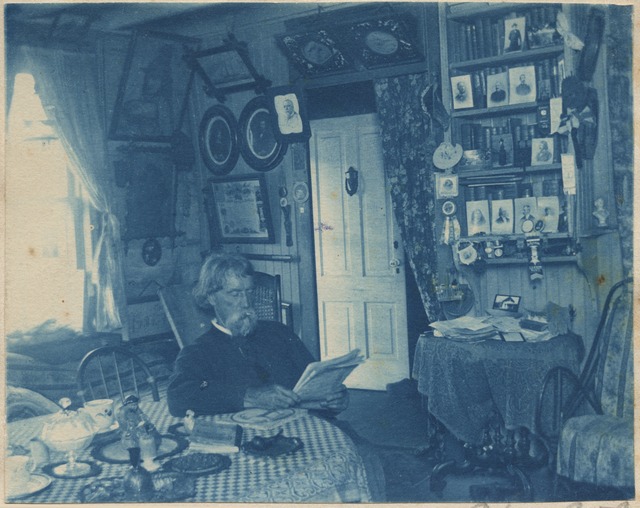
Once, a boat from the Belle fleet defied those orders and attempted to dock at The Hermitage. Major Halsted reportedly ran to the end of his dock with a shotgun, threatening to shoot the captain and anyone brave enough to step foot on his dock. The newspapers of the day stated that Major Halsted was deadly serious; the boat retreated from the dock while the gentlemanly hermit returned to entertaining guests.
On the evening of September 5, 1901, a cottager on the north shore of Priest Bay saw smoke billowing on the horizon just south of Hardscrabble Point. The witness assumed the fire was coming from A. C. Loring’s boathouse, whose property was next to The Hermitage. The next morning it was discovered that The Hermitage, with its valuable collection of relics and romantic history, lay in ashen ruin. As the embers of The Hermitage smoldered, a search broke out across Lake Minnetonka for Major Halsted’s whereabouts. Although the steamboat Mary was moored at The Hermitage’s dock, search parties remained optimistic that Major Halsted could have been an overnight guest at someone else’s home at the time of the fire.
Optimism turned into despair as search parties came up empty handed in Excelsior and Zumbra Heights; the search for Major Halsted was called off. Later that day, a reporter from The Minneapolis Tribune and a fire captain discovered Major Halsted’s remains in the rubble of The Hermitage. Honoring Major Halsted’s wishes, he was buried under the oak tree beside his brother, next to the lake that captured both of their hearts.
This story originally appeared on The Minnesota Historian, the local history website run by Josh Biber.
Sources:
- M.G.J., “Minnetonka as the Pioneers Saw It” The Minneapolis Tribune, July 21, 1907, P. 11.
- “Major Halstead Burned to Death” The Minneapolis Times, September 7, 1901. P. 8.
- “An Up To Date Hermit” The Minneapolis Tribune, August 1, 1897. P. 8.
- “Minnesota’s Pride: the Opening of the Season at Minnetonka” The Evening Journal, June 5, 1882. P. 2.
- “Major George B. Halstead Cremated in The Hermitage” The Minneapolis Tribune, September 7, 1901. P. 9.
- “The Hermitage is Burned” The Minneapolis Journal, September 6, 1901. P. 2.
- Coddington, Ronald. "The Hermit of Lake Minnetonka" Flickr, April 17, 2019.
- Austin, Alice. "George Halstead seated in his home (The Hermitage, Minnetrista (supplied title)" Minnesota Historical Society, 1890.
- "Interior, The Hermitage near Mound, home of Major George B. Halstead" Minnesota Historical Society, 1875.
- "Annual picnic of Minneapolis members of the Ohio Association held at the Hermitage, Lake Minnetonka. (Supplied Title)" Minnesota Historical Society, 1890.
- "Major George B. Halstead seated in front of his home on Lake Minnetonka, Minnetrista" Minnesota Historical Society, 1895.
- Nowack, Michael. "Crane Island from Hermitage" Minnesota Historical Society, 1881.
- Partridge, Frances Loring. "Upper Lake Memories... or an Eventful Auto Trip in 1899" Hennepin History, Summer 1960. https://digitalcollections.hclib.org/digital/collection/p17208coll13/id/3591/rec/1
Stay in touch
Sign up for our free newsletter
More from Racket
Maple Grove’s Restaurant Row: Where Else Can You Find Sysco and (Maybe) Sisqó?
Plus MN's lawbreaking lawmakers, Italian Eatery to close, and the city of Minneapolis's Black employee problem in today's Flyover news roundup.
What Happened to MinnPost’s Instagram?
'It's just frustrating—why our account? We're a small, local nonprofit.'
Weed Weview Wewards 2024
All the things I tried and loved after a year and a half of sampling.
Two Harbors Man at Center of Alleged $46M Renewable Energy Swindle
Plus charges filed against alleged Nudieland killer, Icehouse faces eviction, and students arrested for peaceful protesting in today's Flyover news roundup.
It’s Your Very Last Complete Concert Calendar for April 2024: April 23-29
Pretty much all the live music you can catch in the Twin Cities this week.
